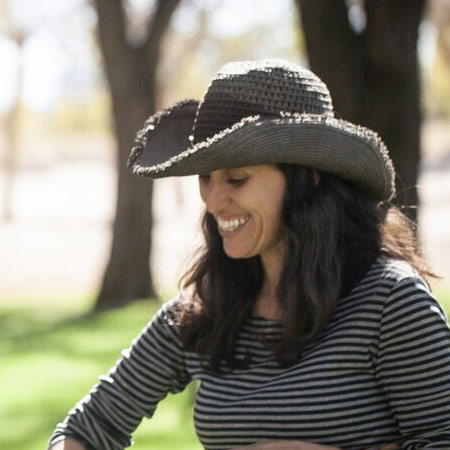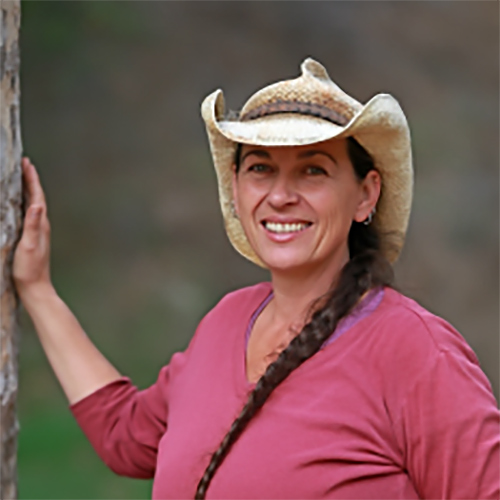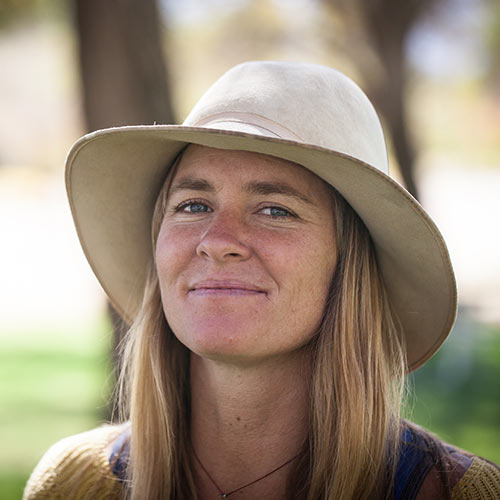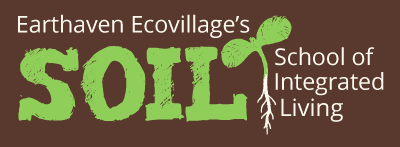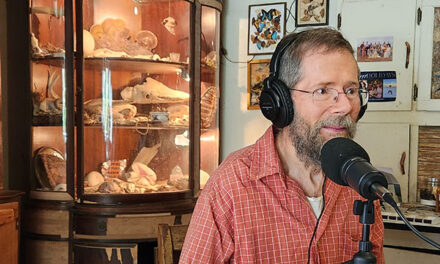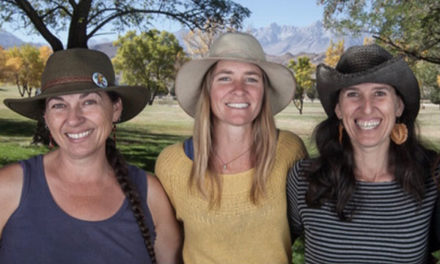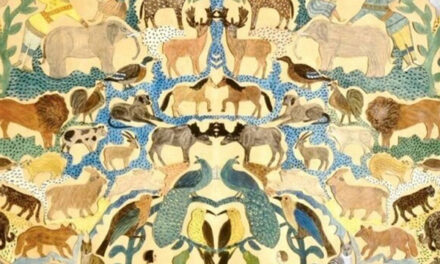Podcast Transcript
Anywhere you are, there’s an opportunity for nature connection, anywhere where there’s other people around, there’s an opportunity for nature connection and anywhere where you are in a place, there’s an opportunity for Nature connection.
Hi, I’m Sara Carter from the Earthaven Ecovillage School of Integrated Living. Welcome to our podcast, where we explore integration within ourselves, with the people around us and with the planet. In this episode, I’m interviewing three fabulous educators, amazing women from the Academy of Forest Kindergarten Teachers. Would you start us off with an introduction, Kelly?
You bet. Hi, I am Kelly Villarruel. I am one of the co-founders of the Academy of Forest Kindergarten Teachers.
I live here in Santa Barbara and I’m also the director of the early childhood programs with the organization Wilderness Youth Project. And I’ve been in this field for a very, very long time. And I find that every day is brand new and fresh and magical. And I just love being here. Thank you for being with us. Thank you for having me. Hello. Thank you for having me today.
My name is Erin Boehme and I am also a co-founder of the Academy of Forest Kindergarten Teachers. I am also the director of Wild Roots, a school in the Eastern Sierra in California. And I also have co-founded a community arts center here in my community. I feel really blessed to be able to do this work with young children and with adults, as a community builder, as somebody who feels very passionate about nature connection work and about humans in general.
I’m Lia Grippo, also a co-founder of the Academy of Forest Kindergarten Teachers and founder and director of the Wild Roots Forest School. It’s for a school here in Santa Barbara and Chumash territory. And, you know, I’m really grateful to be able to do this work for as long as I have, because as my colleagues have have already stated, we are really in love with with all of life. And that is our broader than human community and includes our fellow humans.
And what a pleasure it is to do the work of becoming and being human in this earth. Thank you. That’s lovely.
Well, I’m really excited to talk to you all today and for full transparency, I’ll name that I have been privileged to study with you all at two Reclaiming Nature Connection conferences, as well as your level one teacher training. And it’s certainly enriched my life. And so I feel really pleased to be able to, in this little way, help share you with our listeners, with more of the population. For those of us who may not have heard of forest kindergarten before, can you explain what that is? First, kindergartens, without going into the long and varied history, differ from nature preschools and nature schools in that they are one hundred percent outdoors. Nature immersion early childhood programs, some forest schools work with children beyond early childhood as well.
For our purposes, we work primarily with children two years old to seven years old. And there’s a wide variety of forest schools and the cultures of programs.
What about the Academy of Forest Kindergarten Teachers? How did you all found it? Well, the Academy of Forest Kindergarten Teachers started as an opportunity for us to get to collaborate and learn from and work with other educators in the field, and we started by doing a weekend conference-like workshops where we shared our background and nature connection work in early childhood.
And we had the opportunity of bringing the unique quality of being a forest school teacher to the greater community of teachers, meaning that being a forest school teacher really requires you to be very clear and keen on your childhood development, as well as being a developing naturalist.
And then when you bring those two elements together, there’s kind of a third space that you create as a teacher by marrying the nature connection work, your naturalist’s work with the depth of knowledge you bring for early childhood. And so, because of that unique quality of teaching style, we decided that it would be something to share with people who had an interest in doing this kind of work with young children outdoors. And from there, it grew into even more people being interested in the conversation, and it felt like when we first started the Academy weekend workshops, there were very few people who knew about forest schools.
And now here we are. And it feels like there are just forest schools popping up everywhere around our country. And we’re very grateful to see that movement happen.
Yeah, that’s great. And each of you run a separate program as well as the Academy of Forest Kindergarten Teachers. Is that true? Yeah, Erin and I, both of us direct a Wild Roots campus. Myself on the western side of the state and Erin on the eastern side of the state in California.
Kelly, can you tell us about the organization that you work with? Right, I work for an organization called Wilderness Youth Project that was founded, I think in 1999 as the founders at the time, Warren and Cindy were working out of a place called Transition House, which is like a homeless shelter. And they were seeing that the teens were really having a hard time. So they started taking the teens out and seeing just a real dramatic change in the way that they showed up in the world, being out in nature.
And so that was where where we started. And so our organization works with Nature connection, with children from ages about two and a half, all the way up to adult.
So you three co-host an annual conference at Earthaven. For one thing, I’m curious, why do you come all the way from California to teach this conference in Western North Carolina? Largely because we’re invited, to be honest.
But that invitation stems from having a dear friend and colleague in the field, NikiAnne Feinberg, who used to actually work with Wilderness Youth project with Kelly here in Santa Barbara before coming out to Earthaven. Oh, goodness, quite some years ago. And so that relationship is long lasting and established, but we come because we’re invited. And also we come to North Carolina from California because, you know, we recognize that in our in our more in-depth teacher trainings, people travel from all over the country and all over the world to come and train.
But for weekends, it doesn’t make a whole lot of sense to travel across the country. So we really enjoy the opportunity to go to the east eastern region of the US, as well as have programs on the West Coast.
And I remember that at least one weekend I was a part of there were people from New York and Florida and maybe Ohio or something. People definitely travel for these weekends. Would you tell us a bit about the conference?
Well, I think our up and coming conference, we do different things at them, but I think this one is going to be like craft and game based where we’re doing a lot of Hands-On work with creating. And it’s things that teachers can actually bring to their programs. So they’re really walking away with lots of tools and their magical toolbox that they can bring directly to the children that they’re working with. We do a variety of games and songs and like I said with this one, it’s going to be crafting — top secret, top secret project.
And what about those who might be intimidated by singing? Fairly common, I think most of us have been given the message at some point in our lives that we really don’t have any business singing in front of others unless we’re professionally trained or somehow have some gift that we were born with. But, you know, song is magical and there is no culture that I’m aware of that doesn’t have song as a part of the culture and singing.
And the more important thing than being a great singer is singing together and singing joyfully. What I will say is if you work with children, particularly young children, they are incredibly forgiving audience. All they care about is that we’re enjoying singing together. And if we can cultivate in ourselves the joy rather than the need for perfection, then we’re really doing a service to those children. Hopefully that if they ever hear that message somehow themselves, that they ought not have any business singing unless they’re perfect, that they’ll disregard that message because they’ve had strong experiences.
But that’s just not true. Singing, singing together bonds people. It helps us line up and align our rhythms of breathing and our heart rates and our brain waves. And it’s truly a unifying experience when we sing together. So, you know, so much of our work is really about reminding us adults how to play and what it feels like to be playful. And we invite and encourage people to cultivate that attitude with all those things that feel edgy, whether it’s whether it’s singing or whether it’s being silly or whether it’s being chased in a tag game.
Yeah, I really agree with what you’re saying. And just on a personal note, for those who are listening who might be considering signing up, I have found such beautiful space holding from you three. I have found such an availability for my vulnerability, whether it is with singing or with writing a story and having a fit about it or all kinds of things, those games. Yeah, I think it is scary for grownups to get back into play and get back into song. And I just so appreciate your helping bring that forth in us.
I would also add this is, Erin, that part of the unique nature of our trainings and our conferences has so much to do with the fact that we have such a healthy partnership with three women who work together. We truly, genuinely, authentically love each other and love to play together as colleagues. And I think that what we model is space for any adult who joins us, because we have a synergy between the three of us that I think builds confidence between us, which allows then our students to see that there’s space for adults to be that joyful, that carefree, take a little bit of risk and be that vulnerable and that it will be OK.
And as an adult who works with other adults who I know are going to be working with young children, I personally know that that is so essential to face those vulnerabilities and to find courage, to be willing to be playful and authentically joyful as a role model is so incredibly important that we hold it in the highest regard when we do these trainings and these conferences, because we we dearly hope that that transformation will take place and people will go away feeling lighter and more willing to do this with the young ones.
That actually reminds me of a story that happened when we were out there several years ago in North Carolina, we were playing this song game and one of the participants was there with her daughter and her daughter was so, so shy and she was probably in her early 20s. And so we start singing down by the banks of the Hanky-Panky and playing this game and where when somebody is out, they have to go into the pond in the middle of the pond and the pond edge is getting smaller and smaller and we’re getting closer and closer. And this was the part of the day where this woman’s daughter started singing out loud so joyfully, her face lit up. I was almost in tears. Her mother looked over and saw her face and just couldn’t believe how how expressive she was. And she spoke to us afterwards talking about how her daughter was so shy and she was surprised that she came out in such a big way with her voice. So there’s a lot of magic in singing together as a group, especially when we’re all just really in it being silly and and going for it kind of contagious.
Mm hmm. A beautiful moment.
Yeah.
Thanks, Kelly. You three must have so many beautiful, magical stories, both from your work with children and from your work with adults.
Who should consider coming to reaching Nature connection, who’s it aimed at? Parents, educators, people who just want to show up and have some connection with other human beings.
We’ve had people from so many fields of of work and so many reasons attend and and that includes, you know, who Kelly has named. We’ve also had occupational therapists who work with young children come to our programs. We’ve had naturalists who might do nature connection work with adults, but want to understand what that looks like with young children, because it’s not the same as just taking a pared-down approach to adult nature connection work. We’ve had therapists, child therapists come to our programs and school administrators as well, as well as we’ve often had homeschooling families joining.
And I remember hearing you speak to the difference between nature connection and environmental education, and I’m just imagining possibly in some listeners ears, there’s some environmental education pinging happening. And I’m wondering if you can explain your conception of the difference with those two things. Yes, thank you, Nature connection is a term that I think it’s used rather loosely, but it actually has a really specific meaning. And it is really important to know the difference, especially when you’re working with young children, because environmental education does not tend to be developmentally appropriate for the young child.
What’s happening in nature connection is that it’s primarily a relationship building process. We like to use an analogy that nature connection is the sensation you have of falling in love for the first time where you are in wonder, curiosity, excitement, you’re in a state of investigation all the time. When you first meet the person that you have those extra special feelings for, you’re wondering what they’re doing. You’re asking yourself questions you might be tracking, listening more carefully. All these things that we humans do when we first fall in love with something is really the process of nature connection work.
It’s the relationship building with the natural world and having that first love affair. And as nature connection mentors, we have the privilege in our work to stay in wonder, to continue to look at the world through the beginner’s mind, through the beginner’s eyes, through the beginner’s sensory. We have the privilege to ask questions and not be concerned if we have the answer or not, and to allow those little seeds of mystery to be planted and hope that someday we’ll solve the mystery.
And those are the things that we have the privilege to do as a model for the young child. And of course, it authentically happens that those behaviors, even for us as adults, become a regular inherited way of being. When you’re working in nature connection, environmental education has a really specific purpose. It is important to know about the environment. It’s important to know how the connections and environment are related and why they affect each other. And why wouldn’t we do this?
This happens, however, environmental education is remedial work. And so, if we do not start off in the beginning of our relationship with the natural world in a love affair, we truly do end up in a position where we might start to disconnect or have fear or start to pull away from nature, because truthfully, when we are told something’s polluted, something’s dying, something’s not going to live, we tend to feel fearful of that and not want to invest in a relationship that’s long lasting. And so when we are already in love, when we’re deeply invested in our relationship with the natural world, and then we find out that there are problems, pollutions. You know, climate change, big, big problems. We are willing to hold on to that love affair and stay invested in that relationship. And so in the remedial work comes, we kind of like to say the marriage counseling starts in environmental education, then we’re able to say, OK, here I am, I’m at the table. I have the tools I need to now face what might be happening in the living or in the natural world. And I want to be dedicated to staying connected rather than turn away and become disconnected. And so that’s really the nature connection piece in why the young child really is allowed. It should be protected for them so that they can stay in that love affair while they’re young and while they’re building those relationships to last forever.
Thanks, Erin, that’s really powerful words. And it sticks with me. I think I heard you say once that my job as an adult is to model what it looks like to be in love with nature. And in my work with children, it does feel like my job is to model everything. That’s all my job is to model what it is to be a person. And so I’ve really taken that piece to heart. Thank you.
Can I just go back a little bit to and it does relate to this also, but again, one of the reasons that we founded this organization was also the fact that we were finding we have lots and lots of young children on our wait lists and we as two organizations can’t reach all the children.
And so if we created something where we could work with other educators who become nature connected to continue to work on their own nature connection, then this whole genre of work can be spread really far and wide to reach so many more children because every person can benefit from Nature connection.
Do you have a preference, Kelly, working with children or working with adults? You know, you give me a group of four year olds and I absolutely know how to act, but you get me with a bunch of adults, it’s a little trickier. You know, I just drop into my four year old mind and I’m just four and and then I can do pretty good. I actually really enjoy working with both — they’re different each range has such different gifts and both of them feed me in my work.
So I actually can’t say I have a preference. I really enjoy both.
I would add though that everyone should study early childhood and child development because it applies to all ages. I feel really blessed to have studied child development because I can always see the five year old boy in the grown man when there’s a conflict or something that we are walking through in the adult world knowing child development should, in my opinion, just be one hundred percent basic skill that you learn in your educational life, because it’s such an in-depth study of the way that the human grows.
And once you kind of have that, you’re really in a compassionate place in the world working with people of any age. Yeah, absolutely. Absolutely, and I also know that storytelling is a big part of your work, and I hear that there’s a special guest this year at reaching Nature connection.
You know, every time that we come out to North Carolina, for Reclaiming Nature Connection, we have a glimmer of hope that we will get to spend a little bit of time in the presence of the great Doug Elliott. And when that opportunity comes to fruition, we are so grateful Doug Elliott, for folks who don’t know him or his work, in my humble opinion, is one of the best storytellers I have heard and seen in terms of deep nature connection through storytelling.
And he has such a gift of telling stories in a way that you can truly feel yourself there, witnessing what he’s telling you about in a way that is deeply affectionate and relational and funny. We are so grateful that he will be telling stories once more. I am grateful for everyone who gets to hear him, but also a little selfishly grateful for ourselves as well.
And you are also such a beautiful storyteller. All three of you really see weaving stories into the work that you do. Thank you, Sara. I was just noting a few moments ago, Kelly said that actually reminds me of a story and I realized, oh, I love that. Kelly says that all the time, that everything reminds her of a story. And, yeah, storytelling is one of the most ancient technologies humans have for passing on information and most of the information that’s passed on in stories throughout human history is passed on carefully, carefully from one generation to the next, and so often without our stories we’re lost.
I’m wondering if you might have some simple strategies for people who maybe don’t have access to a lot of nature.
Nature’s free. My dad has a sit spot, which we talk about a lot. It’s your secret spot where you go to that you can just sit outside and just notice what’s happening in the natural world. But he doesn’t get around really well so his sit spot is actually at his kitchen table by a window. And so he spends a lot of time looking out the window at the Karpas trees that is home to tons and tons of bird activity and all kinds of cats moving through there.
So he spends time there getting to know the birds of that bush very, very well. So nature connection can happen out of a window if you’re just paying attention. There are people who work outside every day and are never nature connected. So a lot has to do with how you show up in the natural world, whether it’s through a window or just listening to the sounds. If you’re in it with your senses, you’re going to take in a whole lot more than if you’re just walking down the street with your mind focused on a whole lot of other things.
My children used to love to build fairy houses. And so for the young child or even the adults who have access to a tiny patch of dirt, building a fairy house is a great way to get nature connected. So you’re having the opportunity to care and tend for things that are smaller than yourself, whether or not you ever see them. But it’s a really great way to start or gardening, being out in your garden or tending a flower in a flower pot and watching it transform over time or, you know, growing micro greens on your counter.
That’s also nature connection if you’re really there with it. Yeah. Yeah, to dovetail on that. One of the things I think that often goes missing, that is missed is that tracking weather, watching the sky, watching the patterns of wind, listening to it, feeling the sensation of the wind on your skin, listening to the sounds that the wind makes. Weather is also nature and nature connection. You know, we often say that nature connection is the process of connecting people to place people to people and people to self.
So anywhere where you yourself are, there’s an opportunity for nature connection anywhere where there’s other people around, there’s an opportunity for nature connection. And anywhere where you are in a place, there’s an opportunity for nature connection. But also, you know, there are insects all around us, if we’re lucky. And I know that the truth is in some places insect populations are declining, but there are some really sturdy insects who are going to stick around and you can probably find them if you start looking for them.
And, you know, even in urban areas where there aren’t a lot of plants, weeds come up in the cracks. It’s good to pay attention to those beings, those relatives that come up and push up through the concrete. And they’re pretty tough and they’ve got interesting lives and interesting stories to tell. And as Kelly said, the birds, even if the birds that you have are crows or pigeons, to just pay attention and I think the simplest way to pay attention is to pay attention, as Aaron described, as you’re getting to know a new friend.
Yes, I would add that you need to say “wow” a lot, just practice entering any relationship with “wow” and you’ll find out that it works. We always remind folks who are just starting this journey that it’s not important that you identify what type of bird or tree or insect it is you’re looking at. It’s important that you know that exact bird and even if you want to call it, you know, Henry or Barbara. That’s what’s most important, is that you’ve paid enough attention, that you do feel related enough to the living creature, that you can give it a name that helps you relate even more deeply.
And then someday you’ll find out it’s a red winged blackbird or a, you know, a grackle or whatever the bird might end up being. But what’s most important is that originally it was Barbara.
Hmm. Great, thanks. Thanks for those tips. I guess to wrap it up, do you have one more thing that you’d like our listeners to know?
I would just say that it’s important to know that when you attend a conference with us that we we will be giving you also a lot of factual, in-depth information about child development and some of the backgrounds of maybe even in psychology and in occupational therapy and things that relate to the bigger picture on the child’s experience and, of course, school. And also we do play and sing. But there is there is a very a very well visited area of depth that we go into that we might consider more on the academic side.
But the lovely part is that we’re really good at holding rhythm. So we know when there’s just enough of that and it’s time to get up and play. If we’re not having fun, we’re just not serious enough. Thanks Lia.
Kelly, was there one thing you wanted our listeners to know? I think just that it’s very playful, you know, we get serious, but we’re also very playful because there is a lot of magic that happens. And I say magic a lot, but it’s really true. There’s a lot of magic that happens in the play in the moment when we can connect to others through play and we really get to experience life the way young children experience life through play. And I think it’s important.
Thank you so much for being with us today. It’s been a pleasure to talk to you. And I’m so looking forward to seeing you in these mountains again. And how can people learn more about your work? You can find more information about us at our website forestkindergardenacademy.org.
Well, thanks again so much for your words and your wisdom, and I look forward to seeing you at the conference. Thank you for having us.
Thank you for listening. Please visit our website at integratedlivingpodcast.org and sign up for our newsletter so you know when new podcasts are released. You can also browse our upcoming online and in person class offerings. This podcast is produced by the Earthaven School of Integrated Living in Western North Carolina. Have a great day.
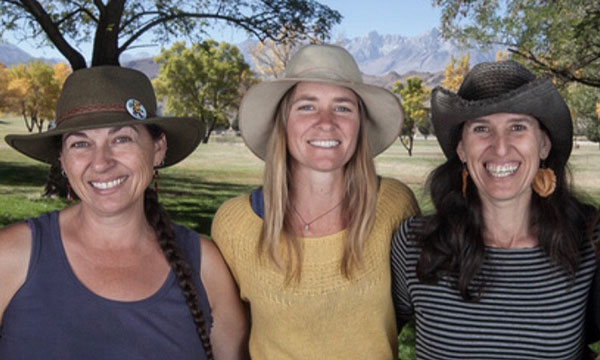 In this podcast, Academy of Forest Kindergarten directors Erin Boehme, Kelly Villarruel, and Lia Grippo discuss nature connection and young child development. They also talk about the annual Reclaiming Nature Connection weekend conference at Earthaven Ecovillage.
Enjoy the podcast, and please consider a donation to support our work.
In this podcast, Academy of Forest Kindergarten directors Erin Boehme, Kelly Villarruel, and Lia Grippo discuss nature connection and young child development. They also talk about the annual Reclaiming Nature Connection weekend conference at Earthaven Ecovillage.
Enjoy the podcast, and please consider a donation to support our work.
